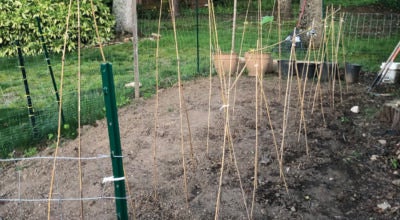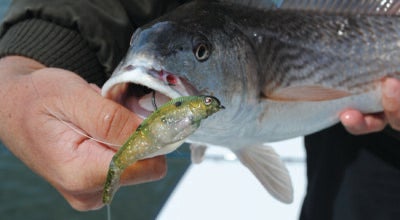CRYSTAL COCKMAN COLUMN: The birds and the bees of Piedmont Prairies
Published 4:07 pm Wednesday, July 18, 2018
My intern for the summer, Lizzy Nist, from Duke University, recently went on a grassland bird survey in Stanly County with Kacy Cook, a land conservation biologist with the North Carolina Wildlife Resources Commission.
Kacy and other NCWRC staff have been doing these surveys for the past 10 years.

Crystal Cockman writes a column for The SNAP through the LandTrust of
I’ve gone with Kacy twice on these surveys, once last year and then several years ago. Both times I went we were lucky enough to spot a loggerhead shrike — a really cool bird with a black mask. Shrike are the birds of prey of the songbird family.
They are also called “butcher birds” — as a result of their tendency to harvest prey then hang the unfortunate mouse or grasshopper like meat on a thorn or barbed wire.
Like many grassland songbirds, shrike are in decline. Kacy’s only seen them a handful of times while out doing the surveys. That’s one reason these surveys are important, to record information on the location and population density of these bird species over time.
Grassland songbirds have decreased more than any other group of birds since the 1960s. The main reason for this decline is loss of habitat. Native grassland habitats are some of the most endangered in North America. Less than 1 percent of original tall grass prairie still exists.
Grassland birds prefer native grasslands, with species like little bluestem, Indian grass, broomstraw, gamma grass, big bluestem, switchgrass and others.
These grasses are known as “bunch” grasses, as they don’t completely cover the ground like fescue. If you’ve ever walked through a fescue field, you know how uneven and hard it can be to walk on. It is equally hard or more so for a baby bird. They need to be able to get to the ground to hunt for bugs and other food.
These bunch grasses also provide cover for birds from hawks and other predators, as they can quickly move between the clumps of grass.
What habitat does remain on the landscape is now often fragmented, making it hard for birds to utilize a patchwork of native habitat sites that may not be located near one another.
Although loss of habitat is the largest contributing factor to the decline in grassland songbirds, other factors have also played a role.
Brown-headed cowbirds lay their eggs in the nest of other birds, which then are forced to either start over with a whole new nest or just go ahead and raise the cowbird with their own young.
Since cowbird babies are bigger they usually outcompete the bird’s own young for food, and their young sometimes don’t reach adulthood as a result.
Use of pesticides, mortality during migration and loss of wintering habitat are other factors that have contributed to their decline. These birds also like to perch on power lines, so transitioning across the road from one power line to another sometimes results in them getting hit by cars.
So what are some species of grassland songbird in our area?
Some of the species likely to be found in grassland habitats nearby include the aforementioned loggerhead shrike, along with the eastern meadowlark, indigo bunting, prairie warbler, bobwhite quail, orchard oriole and grasshopper sparrow.
Grasshopper sparrows are a very small and very cute bird with a call that sounds like that of a grasshopper, so they are hard to hear and identify.
Lizzy and Kacy heard a lot of grasshopper sparrows on their recent survey.
Even if you don’t have a large enough property to meaningfully restore native grasses to help grassland songbirds, restoring native grasses even in small patches provides a positive impact for native pollinators.
Native grasses serve as larval host plants for many native butterflies and moths. Host plants provide food and shelter during this pivotal early life stage.
In addition to Lepidoptera, native grasses provide overwintering habitat for other insects. Female bumblebee queens often nest at the base of bunch grasses where they are protected until they emerge in the spring.
Herbaceous broadleaf plants and wildflowers that provide a food source for these insects, which in turn are food for birds, can also be incorporated to provide diversity to grasslands.
Restoring existing grasslands to native grasses is one great way to contribute to the effort to stop the decline of grassland birds and to help native pollinators.
Additionally, these native grasses can still be used for hay production, and a private lands manager can assist you in determining how to best carry this out, in particularly avoiding a brief time of the year in the spring when birds are nesting. There are even cost-share funds available through the Natural Resources Conservation Service to assist with these efforts.
To learn more about how to restore native grasses and what funds might be available to assist with this effort, you can contact John Isenhour, technical assistance biologist with the North Carolina Wildlife Resources Commission, at john.isenhour@ncwildlife.org or 704-213-4825.
Crystal Cockman is land protection director for The LandTrust for Central North Carolina, of which Stanly is part.





